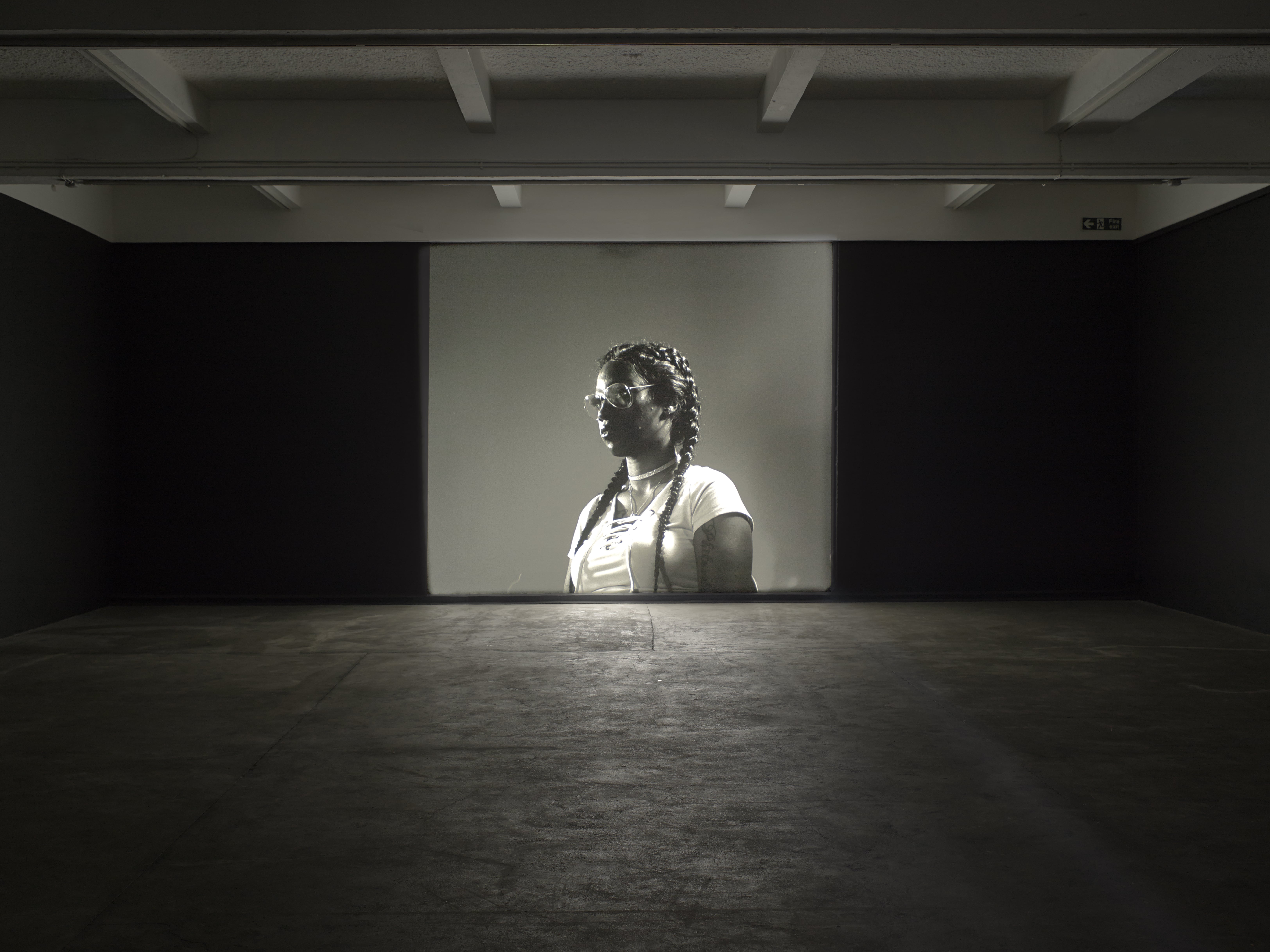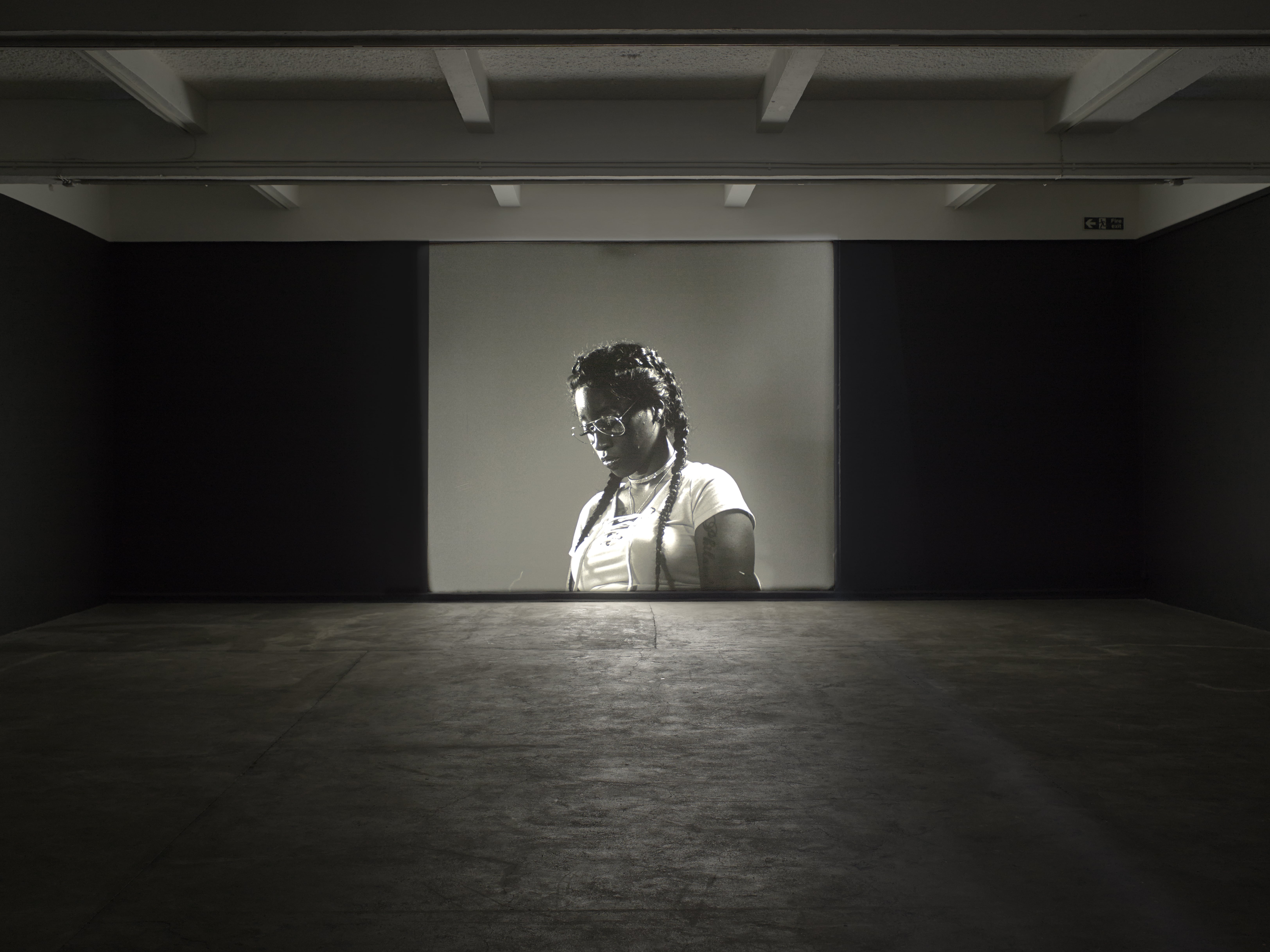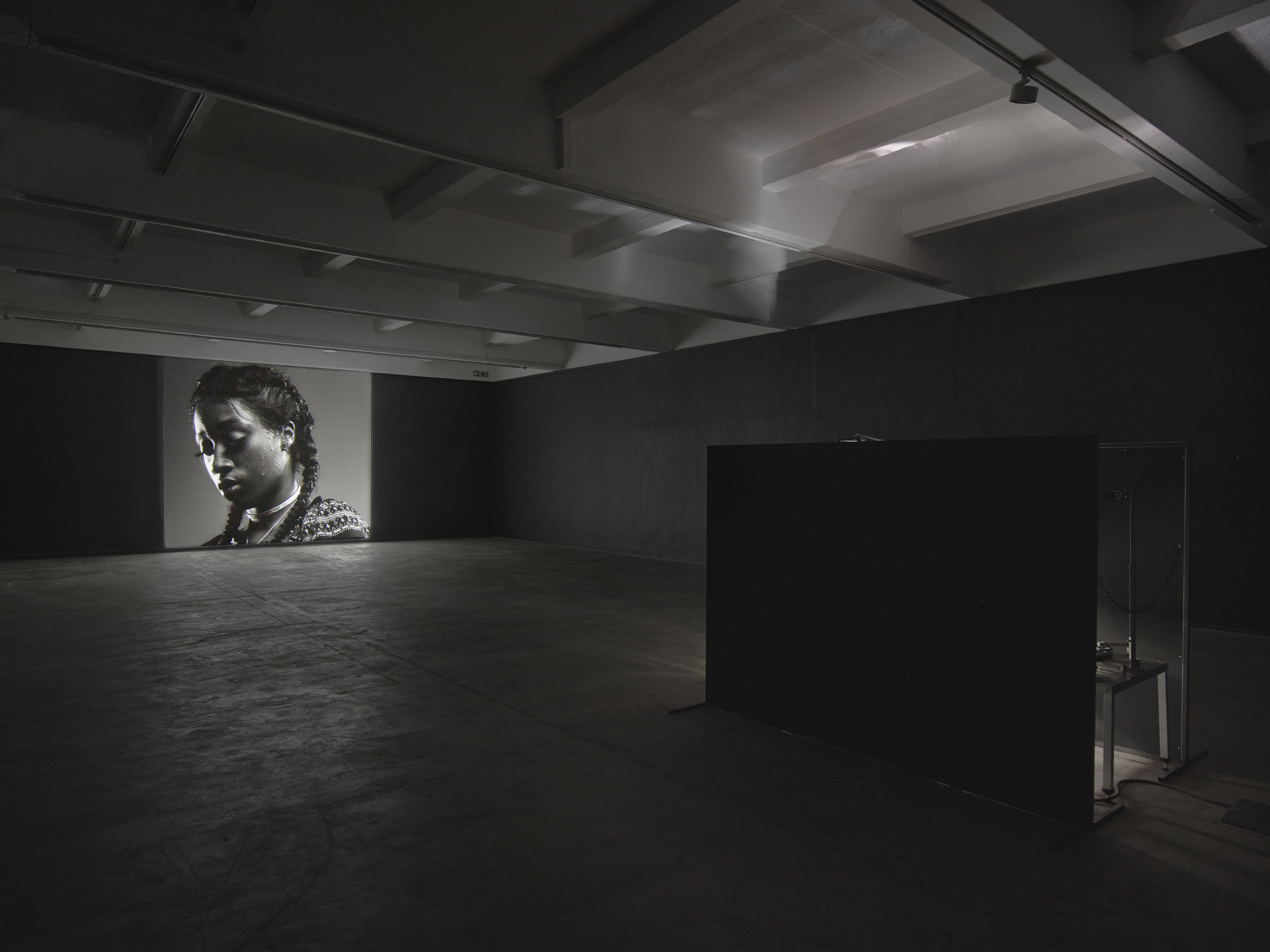


Artist: Luke Willis Thompson
Within the context shaped by a musket barrel, is there any ethical responsibility besides silence, resistance and cunning?1
In the face of brutal violence, survival can be a radical form of resistance. Acting with poise and immediacy, Diamond Reynolds used her smartphone to record and broadcast, via Facebook Live, the moments after her partner Philando Castile was fatally shot by police officer Jeronimo Yanez during a ‘routine’ traffic stop in Minnesota, USA. Reynolds’ visceral and affectively intense video captures the destructive force of antiblack violence. Yet, the video extends beyond the limits of violence. More than simply an act of documentation, of bearing witness, the video is a call reaching across silence, supplicating a response from the viewer who in turn becomes witness.
Luke Willis Thompson’s solo show autportrait at Chisnehale Gallery in East London responds to and extends Reynolds’ call. The show consists of a single eponymous work. A silent – almost sculptural – portrait of Diamond Reynolds filmed on 35mm black and white film is presented as a single, floor to ceiling, projection in the gallery space at Chisenhale. While the slow, quiet images of autoportrait suggest a blunt contrast to the brutality of Reynolds’ video, it can be better understood as a companion piece, forming nascent ways of grasping at the complexity of trauma, memory and communication.
The film consists of two static shots of Reynolds: one frames her head and upper body – she wears a white lace-up top with short sleeves exposing a tattoo – the other is a close-up of her face, her hair braided in two plaits that gently draw down the back of her head, settling on either side of her chest. The braids rise and fall with her breath. To breathe is to survive, its banality held in common. Here, respiration is resistance against the shattering antiblack violence that floods the American landscape, undoing black life. Each breath is a small recovery, personal and communal.
Reynolds’ movement onscreen feels choreographed. The performative nature of the film operates to affirm the reality of Reynolds’ agency. It is a portrait of quietude, strength, of grace under the weight of a tragedy, of holding on. It’s a presence in which body and psyche are preserved in a moment that allows them recovery – a chance to exhale. autoportrait figures Reynolds as the witness (authority) of the work, while simultaneously releasing her from some of the burden of bearing witness by drawing the viewer into a relation of responsibility.
In doing so, Thompson avoids reducing Reynolds to the theme of black suffering. The face isn’t merely an aesthetic object; it can be encountered socially and ethically. The viewer cannot meet Reynolds’ gaze, she casts her eyes downwards – off camera – withholding knowledge of the violence that she has borne witness to and its meaning for her life. The viewer can never know the particularity of Reynolds’ grief and yet, the expressiveness of Reynolds’ face is undeniable, it evokes grief and mourning. Reynolds’ alterity is held intact, while her grief is encountered as a trace that moves beyond the immediacy of her situation. autoportrait evokes a responsibility that extends as it repeats.
autoportrait inhabits a dark gallery space, the film screen providing the only light in the room. A hulking 35mm film projector at the centre-back of the room anchors the work, adding physical weight while signifying the level of care, investment and control required in its production and exhibition. In contrast to Reynolds’ widely (re)circulated video, autoportrait cannot be distributed outside of the circuits specified by the artist.
Thompson’s strict regulation of distribution and access to autoportrait gestures to the relations that form the conditions for the work to exist. autoportrait is both produced by and active in producing its relation to the viewer and the context of its exhibition. The provisional nature of autoportrait is counterpoised to the immoveable weight that delimits its transmission. autoportrait privileges the viewer in the gallery, who becomes a participant in the asymmetrical power relations that govern the reproduction of images. Relationality is critical to reading autoportrait. The viewer has the agency to respond ethically to the work, while being left to deal with the question: who actually benefits from autoportrait?
Antiblack violence is not simply inflicted on the skin of the individual; it is inflicted on the membrane of community, an attempt to tear collective being apart. autoportrait counters the economy of suffering so often produced through the distribution of images of antiblack violence in the media. It interrupts the abusive logic of representation that perpetuates and profits from the accepted subjugation and destruction of black bodies by offering Reynolds a release that cannot be achieved through the media’s circulation of her video – the images of her pain. A decolonising representation of black suffering, it’s about how we respond to another person’s pain and grief over days, weeks and years.
Tristen Harwood is an Indigenous writer, cultural critic and independent researcher, a descendent of Numbulwar where the Rose River opens onto the Gulf of Carpentaria. He lives and works in the Northern Territory and Naarm.
